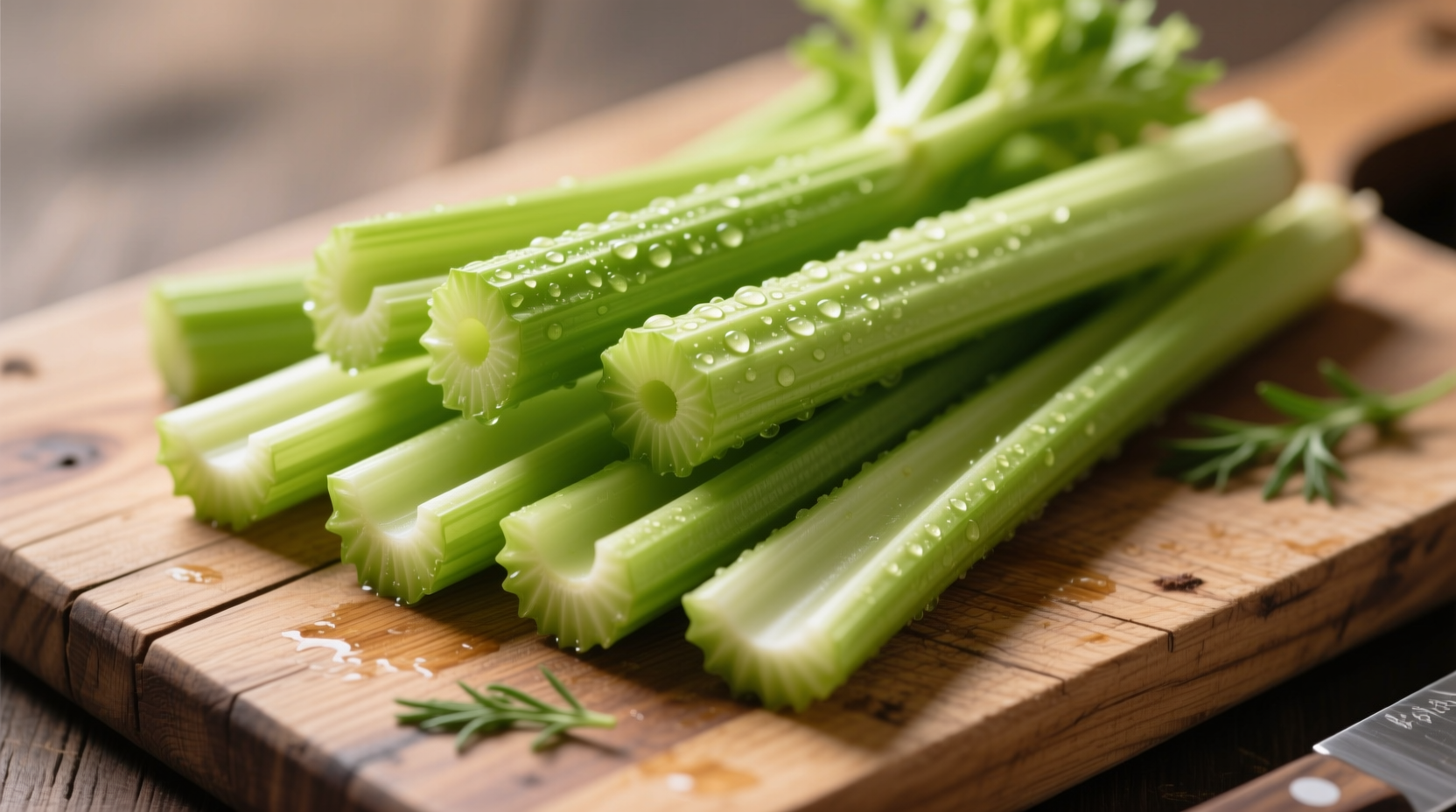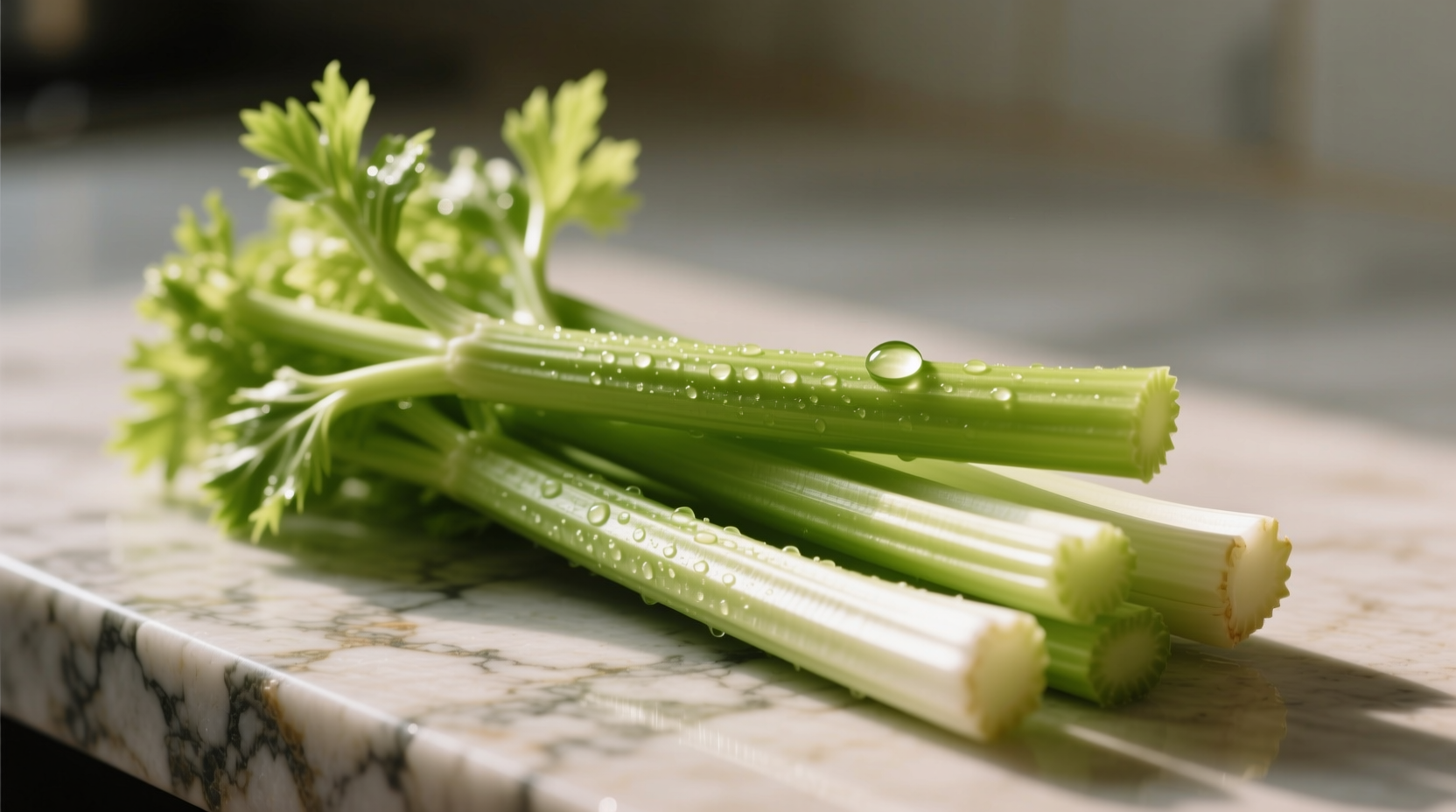Celery sticks are the crisp, ribbed stalks of the celery plant, specifically cut into convenient 4-6 inch lengths for snacking, cooking, and garnishing. They contain just 10 calories per cup, provide essential vitamins K and C, and maintain their satisfying crunch for up to two weeks when stored properly using professional kitchen techniques.
What Exactly Are Celery Sticks and Why They're Different
When you see "celery sticks" in a recipe or grocery list, it refers to individual stalks of celery that have been separated from the bunch and cut into manageable pieces. Unlike whole celery heads which require preparation, celery sticks come ready-to-use for immediate applications. Professional chefs prefer using sticks rather than pre-cut packaged versions because they maintain superior texture and flavor integrity.
The Practical Benefits of Keeping Celery Sticks Handy
Celery sticks serve multiple valuable functions in both professional and home kitchens. Their high water content (95%) makes them ideal for adding moisture to dishes without altering flavor profiles significantly. The natural sodium in celery enhances other ingredients' flavors, functioning as a subtle seasoning agent. When properly stored, celery sticks maintain their signature crunch for meal prep throughout the week.
| Nutrient | Per Cup (101g) | Daily Value % |
|---|---|---|
| Calories | 16 | 1% |
| Vitamin K | 30mcg | 25% |
| Vitamin C | 5mg | 6% |
| Potassium | 260mg | 6% |
| Dietary Fiber | 1.6g | 6% |
Nutritional data sourced from USDA FoodData Central (2023)
Professional Selection and Preparation Techniques
Select celery with firm, upright stalks that snap crisply when bent. The leaves should be vibrant green without yellowing. For perfect celery sticks, follow this chef-recommended process:
- Remove outer stalks first as they're typically the most fibrous
- Wash thoroughly under cold running water, scrubbing grooves
- Cut off the base while preserving root fibers for better storage
- Slice into 4-6 inch segments depending on intended use
- Soak in ice water for 10 minutes to maximize crunch

When Celery Sticks Shine (and When They Don't)
Celery sticks excel in applications where their crisp texture and mild flavor enhance rather than dominate. They're perfect for:
- Raw vegetable platters and snack trays
- Stocks and broths where subtle flavor is desired
- Creamy dips like ranch or peanut butter
- Salads requiring textural contrast
However, avoid using celery sticks in dishes requiring:
- Long braising times (they disintegrate)
- High-heat searing (they burn easily)
- Dishes needing strong flavor profiles
Proven Storage Methods for Maximum Freshness
Improper storage causes celery to wilt within days. Professional kitchens use these evidence-based methods:
Celery Freshness Timeline
- 0-3 days: Room temperature storage - rapid moisture loss begins
- 4-7 days: Standard refrigerator storage in crisper drawer
- 8-14 days: Submerged in water in airtight container (optimal method)
- 15+ days: Freezing for cooking applications only
The water submersion method, recommended by the University of Minnesota Extension Service, maintains crispness by replacing moisture lost through transpiration. Simply place cut sticks upright in a container, cover with cold water, and change the water every two days. This technique mimics how celery grows in nature, keeping stalks hydrated and crisp.
Creative Culinary Applications Beyond Snacking
While celery sticks make excellent vehicles for dips, their culinary potential extends far beyond:
- Flavor base: Combine with onion and carrot for mirepoix in soups and stews
- Infused waters: Add to drinking water for subtle flavor without calories
- Cooking tool: Use as a natural basting brush for roasts
- Texture element: Add to smoothies for crunch without overpowering flavor
Chefs often save celery leaves for garnishing and flavoring, as they contain concentrated essential oils that provide more intense celery flavor than the stalks themselves.
Addressing Common Misconceptions About Celery Sticks
Several myths persist about celery sticks that affect how people use them:
- Myth: Celery has negative calories
Fact: While very low calorie, digestion still requires minimal energy expenditure - USDA research shows no food creates a true calorie deficit through digestion alone.
- Myth: All celery varieties work equally well as sticks
Fact: Pascal celery (the standard grocery store variety) provides the best crunch-to-bitterness ratio for sticks. Cutting celery varieties are too fibrous for raw applications.
- Myth: Organic celery sticks are significantly more nutritious
Fact: According to USDA nutrient analysis, organic and conventionally grown celery show negligible nutritional differences, though pesticide residue levels vary.











 浙公网安备
33010002000092号
浙公网安备
33010002000092号 浙B2-20120091-4
浙B2-20120091-4